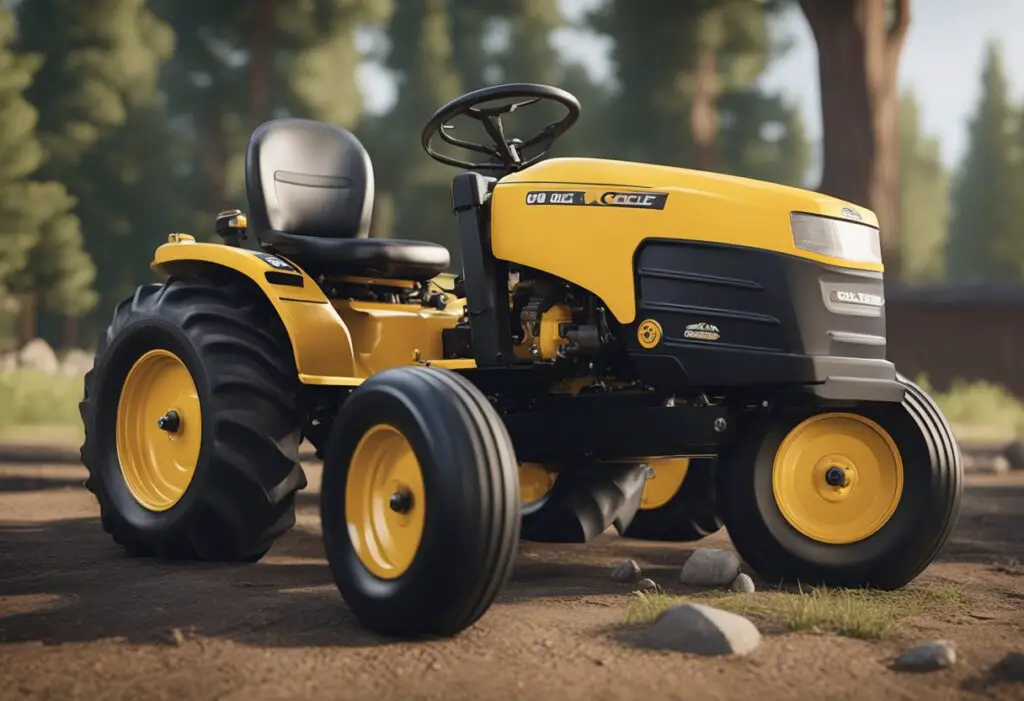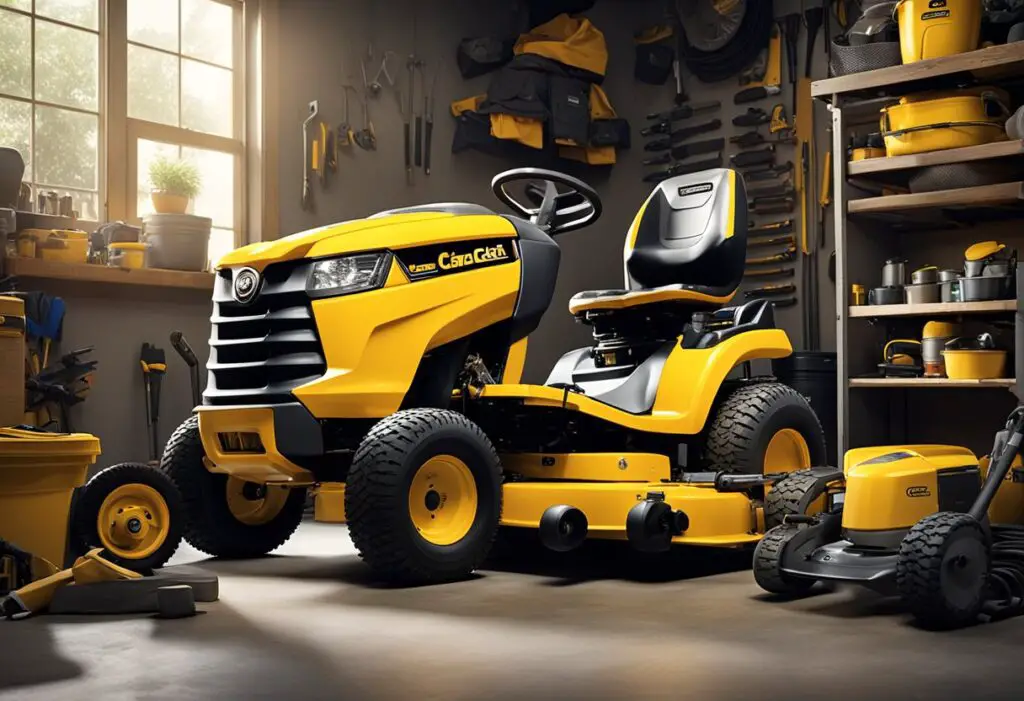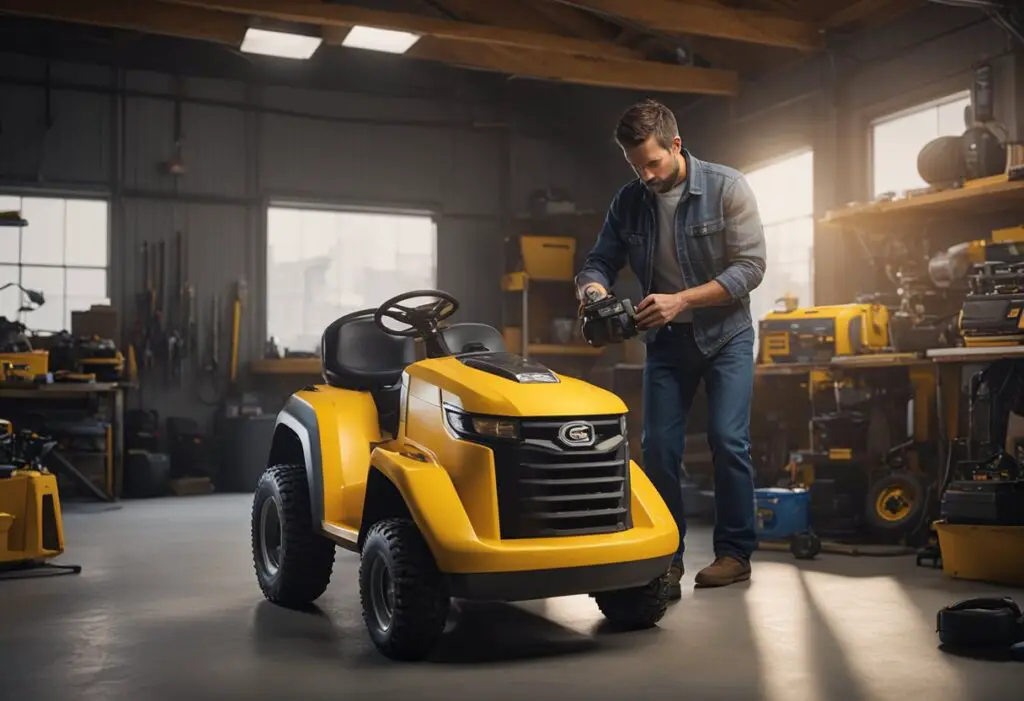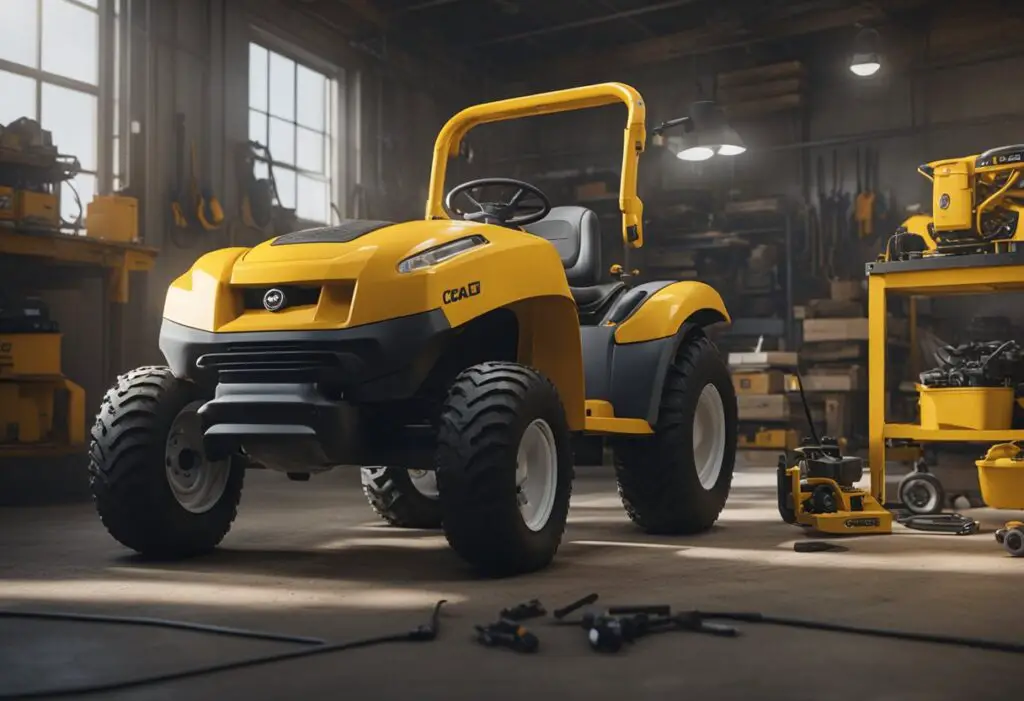Owners of Cub Cadet lawn equipment are generally familiar with the brand’s reputation for durability and performance. However, like any mechanical device, Cub Cadet machines may sometimes encounter starting issues. Several factors can cause a Cub Cadet mower to refuse to start, affecting models across the spectrum, from lawn tractors to zero-turn mowers.

The failure to start may stem from basic operational oversights to more complex mechanical malfunctions. It is imperative for users to ensure that they are executing the starting process correctly as outlined in the manufacturer’s Operator’s Manual. Fundamental issues such as stale fuel, which can lose volatility within 30 days, a dead or weak battery, or a clogged air filter could be the culprit. Additionally, a dirty carburetor, faulty spark plug, or defective ignition key could also prevent the engine from starting.
When troubleshooting a Cub Cadet that won’t start, a systematic approach is advisable. Examining the components responsible for air, fuel, compression, and spark often reveals the root of the problem. Routine maintenance, such as replacing spark plugs and filters, can prevent many starting issues. When simple fixes do not resolve the starting issue, further investigation of the electric starter system or fuel delivery mechanisms may be necessary.
Understanding Cub Cadet Starting Issues
When a Cub Cadet lawn tractor refuses to start, the issue typically lies within the electrical system, fuel system, or air intake and filtration. Proper diagnosis and maintenance can resolve these common problems.
Identifying Common Electrical Problems
The most frequent electrical issue in Cub Cadet lawn tractors is related to the battery and spark plug. These components are crucial for initiating the engine’s ignition process. The tractor’s engine may fail to start if the battery is low on charge or if terminal connections are corroded. A voltage check can confirm the battery’s condition. Similarly, a faulty or dirty spark plug may disrupt the engine’s ability to fire. For effective troubleshooting, inspecting and replacing the spark plug, as well as ensuring a fully charged battery, are recommended.
- Battery: Check voltage level; examine terminals for corrosion.
- Spark Plug: Inspect for deposits; replace if damaged.
Fuel System Challenges
A Cub Cadet’s engine relies on a robust fuel flow to start and run efficiently. Fuel system problems may arise from stale or inadequate fuel, a clogged fuel filter, or complications within the carburetor. Maintenance routines should include:
- Ensuring fresh fuel is in the tank.
- Inspecting and replacing the fuel filter to guarantee unobstructed fuel flow.
- Checking the carburetor for dirt or clogs, which could impede fuel delivery.
Air Intake and Filtration Concerns
Proper airflow is essential for engine operation, and a Cub Cadet’s air filter plays a key role in maintaining it. A blocked or dirty air filter can stall the engine by preventing the necessary air from mixing with fuel for combustion. Conduct regular maintenance checks and clean or replace the air filter as needed to ensure clean air reaches the engine.
- Air Filter: Regularly examine for debris; replace according to maintenance schedule.
Step-by-Step Troubleshooting Guide
When a Cub Cadet mower fails to start, an operator must conduct a thorough examination of key components. This meticulous approach can often reveal the source of the problem.
Spark Plug Inspection
An operator should first remove the spark plug and inspect it for signs of wear or carbon buildup. If the electrode is fouled or damaged, cleaning or replacing the spark plug may be necessary. A clean, well-gapped spark plug is essential for a properly functioning ignition system.
- Visual Check: Examine for cracks or deposits.
- Gap Measurement: Verify the gap is set to the manufacturer’s specification.
Battery and Voltage Test
To ensure the starter motor receives adequate power, one must test the battery voltage with a multimeter. The battery should typically show a reading above 12 volts; a reading under this implies a charging issue or a depleted battery.
- Voltage Reading: Use a multimeter, set to DC Volts, and place probes on battery terminals.
- Connection Inspection: Check for corrosion or loose cables that may impede electrical flow.
Fuel System Check
Next, an evaluation of the fuel system is in order. An operator needs to inspect fuel lines for blockages and the fuel pump for proper operation. Stale fuel should be replaced with fresh fuel, as old gasoline can prevent proper engine starting.
- Fuel Lines: Inspect for leaks, kinks, or blockages.
- Fuel Pump: Assess for signs of malfunction or damage.
Air Filter Examination
A clogged air filter restricts airflow, impeding engine start. Removal and inspection of the air filter to confirm it’s clean and free of debris is prudent. If the air filter is dirty, either clean or replace it as directed by the manufacturer’s guide.
- Filter State: Check for excess dirt or obstruction.
- Replacement: If beyond cleaning, replace with a new, clean air filter.
Preventative Maintenance and Care

Preventative maintenance is essential for ensuring the longevity and reliability of a Cub Cadet mower. Addressing simple care routines can greatly reduce the likelihood of starting problems.
Regular Engine Maintenance
The engine is the heart of the mower, and regular maintenance is crucial. Owners should change the engine oil at least once per year or after every 50 hours of use, whichever comes first. They should inspect the spark plug annually, replacing it if it is damaged or worn out to ensure efficient ignition.
- Oil Change: Annual or every 50 hours
- Spark Plug: Inspect and replace as needed
Fuel Management
Fuel quality directly impacts engine performance. Owners are advised to use fresh fuel with an ethanol content of less than 10%. Adding a fuel stabilizer can extend the fuel’s life and prevent the ethanol from separating and causing blockages.
- Fuel Type: Less than 10% ethanol
- Fuel Additive: Use stabilizer to prolong fuel life
Air Filter Upkeep
A clean air filter allows the engine to breathe and operate efficiently. The air filter should be checked regularly and replaced as necessary, especially when operating in dusty conditions. Simple cleaning or replacing the air filter can prevent airflow restrictions that might lead to starting issues.
- Inspection: Check the air filter regularly
- Replacement: Change when dirty or as part of annual maintenance
Solutions for Specific Cub Cadet Models

When tackling starting problems with Cub Cadet models, one must approach each series with its particularities in mind. The XT1, XT2, and XT3 GSX each have unique issues and corresponding solutions that must be addressed with precision and care.
Cub Cadet XT1 Starting Solutions
Cub Cadet XT1 lawn mowers may experience starting difficulties due to a variety of factors. To remedy these issues, they should start with checking the fuel flow, air filter, and spark plug condition. A fresh spark plug and clean air filter can significantly improve the chance of ignition. Specifically:
- Fuel Flow: Ensure that the fuel filter is not clogged and the carburetor is clean.
- Air Filter: Replace if dirty to improve airflow to the engine.
- Spark Plug: Check for corrosion and proper gap spacing; replace it if necessary.
Cub Cadet XT2 Operational Fixes
For Cub Cadet XT2 series, operators often find that a systematic check of the electrical system is required. This includes the battery, starter solenoid, and starter motor. The steps include:
- Battery: Verify that it is fully charged and connections are corrosion-free.
- Starter Solenoid: Test for functionality and replace if it fails to bridge the circuit.
- Starter Motor: Inspect for secure attachment and signs of damage; consider replacement if defective.
Addressing Cub Cadet XT3 GSX Concerns
The Cub Cadet XT3 GSX model, being a more robust machine, might have starting issues related to the more complex electrical and fuel systems it possesses. Operators should pay special attention to:
- Electrical System: Check all fuses and ensure the ignition switch is functioning correctly.
- Fuel System: For fuel injection models, ensure injectors are not clogged and the fuel pump is operational.
Professional Help and Resources

In tackling Cub Cadet starting problems, there are moments when the situation calls for professional assistance. This section lays out clear avenues for when and how to engage with experts, from local dealers to the brand’s official support channels.
When to Contact a Local Dealer
Contact a local dealer if a Cub Cadet mower still won’t start after trying the basic troubleshooting tips in this article. Local dealers have trained technicians who can diagnose complex problems. They also ensure that all safety precautions are adhered to during repairs. They offer personalized service and can handle warranty-covered repairs where applicable. It is advisable to reach out to a local dealer in the following scenarios:
- The mower fails to start despite following troubleshooting steps.
- The problem reoccurs or if there is an unfamiliar mechanical noise.
Utilizing Cub Cadet Support
Cub Cadet provides various support resources for their products, including detailed troubleshooting tips directly from the manufacturer. Owners are encouraged to use these resources when facing starting problems. Cub Cadet’s support can be accessed through:
- Official website: Detailed FAQs and troubleshooting guides.
- Customer service line: For real-time assistance from Cub Cadet representatives.
Consider these professional resources to maintain the mower’s longevity and performance.

Leave a Reply